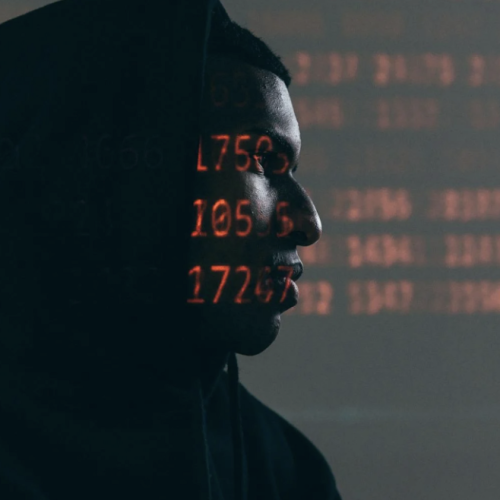Though a universal human trafficker profile does not exist, this article provides a best-of-breed example based on criminal profiling from both an investigative and a behavioral perspective analyzing traffickers’ characteristics and traits, roles, and groups. The source is United Nations Global Initiative to Fight Human Trafficking (UN.GIFT), Background Paper 016 Workshop: Profiling the Traffickers, Vienna Forum to Fight Human Trafficking, 13-15 February 2008. Though this profiling example predates others cited in The Human Trafficker: Part 1 article, it is the only one employing a criminal profiling methodology. Another distinction is it is the only paper to define actor roles across a seven-stage human trafficking lifecycle.
Who Are Traffickers?
As detailed in Part 1, little is known about human traffickers — those who enable or participate in the trade and exploitation of other human beings. Many actors commit or are complicit in the commission of trafficking offences. Actors, roles, behavior, etc vary based on the form trafficking, size of the criminal organization, stage of trafficking, country (origin, transit, and/or destination), etc. Given the hidden nature of the crime, studies suggest a large majority of traffickers who are active across the many stages of human trafficking never come into contact with the criminal justice system.
Trafficking organizations and networks typically employ criminals on the periphery of operations who facilitate and/or support the commission of crime. Individuals may take on one or more roles within the network. Recruiters, for example, may also work as transporters or exploiters. All of these people represent opportunities to combat trafficking.
Actors and Roles Across the Human Trafficking Lifecycle




Characteristics and Traits of Traffickers
Gender of Traffickers: While traffickers are either men or women, the roles played by women in trafficking-related criminal groups vary. In some criminal groups, women play a significant role in the trafficking process. Contrasted with this, however, are situations where the function of female traffickers is to help the male, leaving her at the margins of criminal activity.
Recruiters of victims are often selected for their ability to quickly establish trust with victims they are recruiting, e.g. one study found that female traffickers were often used to recruit victims who would quickly perceive them as credible and authoritative. Trafficking operations in which traffickers are exclusively female indicate victims tend to be women or girls. Studies suggest that in some countries, traffickers who sexually abuse their women and child victims are almost always male.
Some traffickers are former victims themselves. Reasons that a trafficked victim becomes a trafficker include fear of threatened or actual violence and/or as a ‘graduation’ of their role within a trafficking enterprise.
Nationality of Traffickers: Given that every country is a country of origin, transit and/or destination, traffickers can be of any nationality. Knowledge of both the countries in which traffickers operate as well as their country of nationality is key. Recruitment of victims may be significantly facilitated when the recruiter speaks the same language and derives from the same culture. Many organized crime groups established in diaspora communities maintain strong ethnic links with their states of origin.
Age of Traffickers: Traffickers can be children through to elderly adults. In many cases, recruiters are older than those they recruit. This is attributed to the heightened ease with which an older person can manipulate and ultimately recruit a younger person. On the other hand, many children are forcibly recruited into armed conflict as child soldiers by other children.
Family/Marital Status of Traffickers: Some traffickers are married or in domestic partnerships and some are single. Some have children, some have none. In some cases, spouses, partners, children, parents and other relations are oblivious to the criminal activities of their relatives. In other cases, families are collaboratively engaged in trafficking operations. Family networks can comprise husbands, wives or domestic partners, children, parents and extended family and operate across borders.
Occupation, Education and Criminal History of Traffickers: The few studies that have been conducted show that some traffickers have a criminal history in trafficking or other crimes, while others have never been involved in crime or have no criminal record. Some studies into the commercial sexual exploitation industry, reveal that prior to becoming traffickers, a majority of these people had a strong nexus with the industry into which they would ultimately supply trafficked persons. Many ‘employees’ of traffickers become traffickers themselves; a significant number of traffickers started as ‘amateurs’ in the field working as ‘spotters’ (locating vulnerable persons to be trafficked), eventually moving up to a higher rung in the trafficking hierarchy. Some documented traffickers have a professional occupation aside from their criminal trafficking activities, some are unemployed and/or facing situations of extreme poverty, living primarily from their trafficking activities. Some traffickers have little to no education while others have been found to be highly educated to a post-graduate level. A key point is that not enough research has yet been undertaken into who traffickers were before they became traffickers, how they came to be traffickers, and who they are outside of being traffickers. What is known reveals that the only unifying factor between traffickers of differing economic, social, cultural and educational backgrounds is that their motive for trafficking is almost always financial; some traffickers hope to grow rich while others are merely struggling to make a living and provide for their families.
Distinctions Between Roles of Traffickers
Hierarchy of Roles: Individual traffickers can be considered in terms of their function in the hierarchy of roles in the trafficking organization or operation, such as:
– Master trafficker: At the apex of hierarchy. Enjoys high level of anonymity. Manages, modulates and orients activities. Profits the most from trafficking activities.
– Primary traffickers: Identifies sources of supply and demand, procures, buys and sells humans in various locations.
– Secondary traffickers: Delivers human cargo to primary traffickers; often included here are relatives or acquaintances of victims, petty criminals and local goons.
– Grassroots intelligence gatherers: Visits locations (markets, railway stations, etc) to
gather intelligence about vulnerable persons. Report to primary or master trafficker.
Recruiters: Recruiters recruit victims. According to one study:
– 6 out of 100 recruitments are done by a close relative
– 3 out of 10 recruitments are done by a close friend
– Almost half of all recruitments are done by someone known to the victim
– Recruiters come from every age group
– Female recruiters are often better able to appeal to and establish the trust of young
female victims
– Recruiters often come from the same disadvantaged social and economic background as those they recruit
– Recruiters typically organize documents, tickets, meals and housing
– Recruiters are likely to be part of an organized criminal network, including:
— Illegal or illegitimate employment agencies
— Passport, visa and other document forgers
— Drivers, pimps, brothel owners, corrupt state officials
Modus Operandi: Recruiters are usually extremely skilled at gaining the trust of victims in order to manipulate them. Often, recruiters are selected to perform this function because of their potential appeal to potential victims. Their credibility and the rapport they established with victims was believed to be enhanced where recruiters were older than victims. Other reports find that recruiters often come from the same ethnic group as their victims; a factor which facilitates their capacity to communicate with and build the trust of victims. While a number of women and girls trafficked into sexual exploitation are lured by advertisements in newspapers, in countries where print media is heavily regulated, traffickers resort to more ‘direct’ contact with victims.
Relationship Between Recruiters and Victims: Some traffickers recruit victims from among their own families or acquaintances.
Transporters: The issue of transportation of victims of trafficking is complicated. It may merely involve the movement of a person within a country – potentially by the recruiter — but it also may involve transporting someone through and/or to other countries across borders.
Modus Operandi: The mode of transportation use will depend on the trafficking route; public transport may be preferable for transporters for the anonymity it provides and the lack of attention it draws from law enforcement authorities in comparison to hired vehicles. Where trafficking is transnational, it means potential encounters with border and immigration authorities. Police and border officials may be bribed, or trafficked victims may cross borders legally on a student, tourist or work visa and then overstay the permitted duration of that visa. When legal visas are not a possible course, traffickers will use falsified travel and/or identity documents, or alter valid documents. Alternatively, no documentation is used as victims are simply taken across borders bypassing border points. Another potential complication arises through the intersection of crimes relating to migrant smuggling and human trafficking; it is possible that a person who ultimately falls victim to trafficking was initially smuggled as a migrant. Complications concerning the roles played by criminals and corrupt authorities highlight the need for more investigations and research into this area.
Exploiters: Exploiters comprise a range of actors, from those who exercise control over a victim to exploit them for profit, to the ‘end user’ of the victim who derives the service the person was trafficked to provide. With regard to the trafficking of persons for the purposes of sexual exploitation, there is an assumption that a trafficker would provide persons to a pimp who would live off the profits from this exploitation. These roles may also overlap, with the trafficker also being the ‘pimp.’ In cases of labor trafficking, an exploiter would be the person who gains the benefit of the exploited person’s labor, and in the case of trafficking in persons for the purpose of organ removal, the exploiter would be the ‘organ broker’ who financially benefits from the transaction as well as the recipient of the organ (or body part).
Can Clients Be Considered To Be Traffickers? Yes, per Article 19, Council of Europe Convention on Action against Trafficking in Human Beings and its Explanatory Report on Action against Trafficking in Human Beings (Council of Europe Treaty Series – No. 197), 2005. That article criminalizes ‘the use of services which are the object of exploitation” where the user has knowledge that the person is a victim of trafficking.
Categorization of Trafficking Groups
Criminal Enterprises: Developing an understanding of traffickers requires that the larger structures in which they can operate also be investigated. Trafficking in persons can be conducted through spontaneous informal low-level contacts, through to highly organized international networks. Small groups of individuals may comprise family networks or be connected through shared ethnicity, while large scale criminal networks may operate internationally and oversee the entire operation from the recruitment through to the exploitation of the victim. Different criminal groups operate in different criminal structures; how groups are organizationally structured can give an indication of how activities are pursued.
Business Enterprises: Given that profit is the primary objective of traffickers, regardless of the structures in which they operate, trafficking groups can also be categorized as different types of ‘business’ model. Understanding them in this way offers insight into their modus operandi and resultantly, the means by which they can be stopped. Prevailing models by region include:
– Eastern Europe and Central Asia: Natural Resource Model
– East Asia: Trade and Development Model
– Central and North America: Supermarket Model: Low Cost and High Volume
– Balkans: Violent Entrepreneur Model
– West Africa: Traditional Slavery with Modern Technology
The Human Trafficker: Part 3, the final article in the series, will summarize current trafficker profiles globally and by region.




